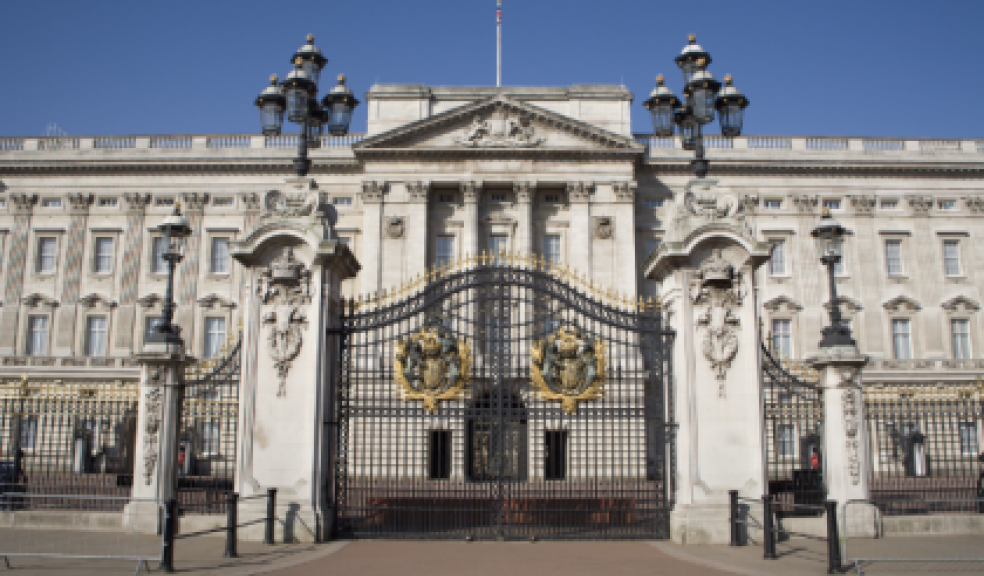
Queen should open palace to raise funds
MPs today said that Buckingham Palace should be opened to more paying visitors when the Queen is not in residence to fund improvements to the royal estate.
The influential Public Accounts Committee criticised the Royal Household for mismanaging its finances.
Chairwoman Margaret Hodge said there was "huge scope for savings" on the annual £31m of taxpayer funds given to the Queen to spend on official duties.
But a spokeswoman for the royals said spending was now more transparent.
The Sovereign Grant replaced the old Civil List and grants-in-aid system in 2012 and is used to fund royal duties, pay staff and maintain palaces.
The report said Buckingham Palace had overspent on the grant by £2.3m last year and had to dip into its reserves, "leaving a balance of only £1m at 31 March 2013 - a historically low level of contingency".
The report in detail:
The Rt Hon Margaret Hodge MP, Chair of the Committee of Public Accounts, said: "This Committee welcomes the consolidation of the Civil List and Grants-in-Aid into the single Sovereign Grant that happened on 1 April 2012. The purpose of the Grant is to provide resources for the Household to support The Queen’s programme of official duties. This move has strengthened accountability and scrutiny of the Royal Household’s spending on The Queen’s official business.
However, we feel that The Queen has not been served well by the Household and by the Treasury, which is responsible for effective scrutiny of the Household’s financial planning and management. We believe that The Treasury has a duty to be actively involved in reviewing the Household’s financial planning and management – and it has failed to do so.
There are three areas in particular where we feel the Household and the Treasury have fallen short.
First, the Household spent more than it took in. Net expenditure (£33.3m) was greater than the Grant (£31 million) in 2012-13. The Household had to draw down £2.3 million from its £3.3 million Reserve Fund, leaving a balance of only £1.0 million at 31 March 2013, a historically low level of contingency.
The Household needs to get better at planning and managing its budgets for the longer term – and the Treasury should be more actively involved in reviewing what the Household is doing.
Second, the Household is not looking after nationally important heritage properties adequately. Back in March 2012, 39% of the Royal estate was assessed as below what the Household deemed to be an acceptable condition. Now it is likely to be worse, with some properties in a dangerous or deteriorating condition.
The Household must get a much firmer grip on how it plans to address its maintenance backlog. It has not even costed the repair works needed to bring the estate back to an acceptable condition, and the Treasury did not require an estimate. Again, the Treasury has an oversight role here.
Finally, there is scope for the Household to generate more income and reduce its costs further. It’s certainly good news that the Royal Household has increased its income in 2012-2013 to £11.6 million. However, we think it could do more. Since 2007-08, the Household has cut its net costs by 16% in real terms, but 11% of that was achieved by increasing income, and just 5% by reducing expenditure. With better commercial expertise in place, we think there is room to do more with less, reducing costs further and supporting The Queen’s programme more effectively."
Margaret Hodge was speaking as the Committee published its 39th Report of this Session which, on the basis of evidence from the Royal Household, examines the Sovereign Grant.
On 1 April 2012, the Sovereign Grant (the Grant) replaced the Civil List and the three Grants-in-Aid. The purpose of the Grant is to provide resources for the Household to support The Queen’s programme of official duties. The Grant covers the staffing costs of the Household, maintaining the Royal palaces, and the costs of Royal travel. The Treasury is responsible for monitoring whether the Household uses the Grant in accordance with a Framework Agreement between the Treasury and the Household. The Grant was £31 million in 2012-13 and is set to rise to £36.1 million in 2013-14 and to £37.9 million in 2014-15. In 2015-16, the Royal Trustees will carry out their first review of the funding formula for the Grant.
The Treasury is responsible for effective scrutiny of the Household’s financial planning and management. The Treasury’s oversight of the Household’s activities relating to the Grant is defined in a Framework Agreement. The Treasury is responsible for monitoring whether the Household uses the Grant in line with the Framework Agreement. The Agreement requires the Household to submit an annual Sovereign Grant Budget for the forthcoming year to the Treasury for approval. The Treasury discusses with the Household progress against the budget in the course of the year. The Household has given the Treasury a three-year plan of spending on maintenance of the estate. However, the Treasury did not require the Household to submit an estimate of the total repair costs to the Royal estate to bring these back to an acceptable condition. The Household has key challenges ahead relating to financial planning and management; including the options for Royal travel once the Royal train is taken out of service, and the Household’s strategy for protecting historic properties from further damage and deterioration.
Recommendations
Recommendation: The Treasury should be more actively involved in reviewing the Household’s financial planning and management. It could draw on a full range of cross-government and property experience in its review, to offer advice on the key challenges facing the Household ahead on options for Royal travel and protecting the properties in the Royal estate.
The Grant’s funding formula provides the Household with certainty for its planning and budgeting, but does not give it clear incentives to find efficiencies. The Grant is calculated as the greater of the funding received in the previous year or 15% of the Crown Estate’s net surplus two years prior. This method provides certainty through a guaranteed minimum level of funding and gives the Household the opportunity to plan and set budgets over a longer-term. However, the Treasury should continue to ensure that the Household seeks and secures greater financial efficiencies.
Recommendation: The Household should ensure that it employs effective longer-term financial management and planning processes for managing the Grant, and that potential efficiencies in Grant expenditure are identified. In their 2015-16 review of the funding mechanism, the Royal Trustees should also have regard to the need to drive efficiencies in the Household’s support to the Monarch.
There is scope for the Household to generate more income and reduce its costs further. The Household set out an income generation strategy in 2009, and it subsequently increased its income to £11.6 million in 2012-13, compared to £6.7 million in 2007-08. However it could do more. Since 2007-08, the Household has cut its net costs by 16% in real terms; of this 11% was achieved by increasing income, and just 5% by reducing expenditure. We suggest that more could be done to reduce expenditure. In recent years, public sector organisations have managed to reduce spending, while being expected to maintain or improve the services they provide. Since 2010-11, the Household has kept any pay rises to staff below the increase in the annual cost of living. In 2012-13, it awarded a 2% increase in basic pay, but it also awarded an increase of £7,000 to the annual pay of one member of the Lord Chamberlain’s Committee.
Recommendation: The Household should ensure it has sufficient commercial expertise in place, both to maximise opportunities for generating income and to reduce costs, with a view to supporting The Queen’s programme at lower net cost, providing better value.
The Household needs to do more to safeguard nationally important heritage properties. When assessed at 31 March 2012, 39% of the Royal estate was below what the Household deemed to be an acceptable condition. The current position is likely to be worse, with some properties in a dangerous or deteriorating condition. Since 2007-08, the Household has deferred important property maintenance and kept spending on property broadly static, in line with the Grant-in-Aid funding it received. We note the Household has not even costed the repair works needed to bring the estate back to an acceptable condition. It had taken the view that there was no point in doing so due to the uncertainty of Grant-in-Aid funding. It now intends to re-introduce its 10-year maintenance plan, drawing on the greater certainty of Grant funding.
Recommendation: The Household should make swift progress on updating its property maintenance plan, including an estimate of the cost of repairs needed to bring the estate back to target condition, and clear prioritisation of the work required.
The Household has left its Reserve Fund at a historically low level of only £1 million. In 2012-13, the Household drew on its reserve funds with gross expenditure of £44.9 million compared to income of £42.6 million (£31 million Grant plus £11.6 million other income). As a result, the Household drew down £2.3 million from its £3.3 million Reserve Fund, leaving a balance of only £1.0 million at 31 March 2013—or 2.2% of gross annual expenditure compared to 7.7% at 31 March 2012.
Recommendation: The Household should rebuild a sufficient level of contingency in its Reserve Fund to cover unforeseen demands on The Queen’s programme.











